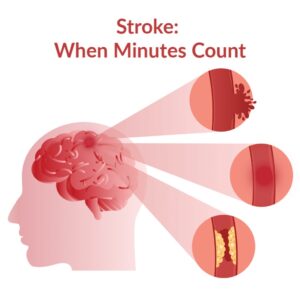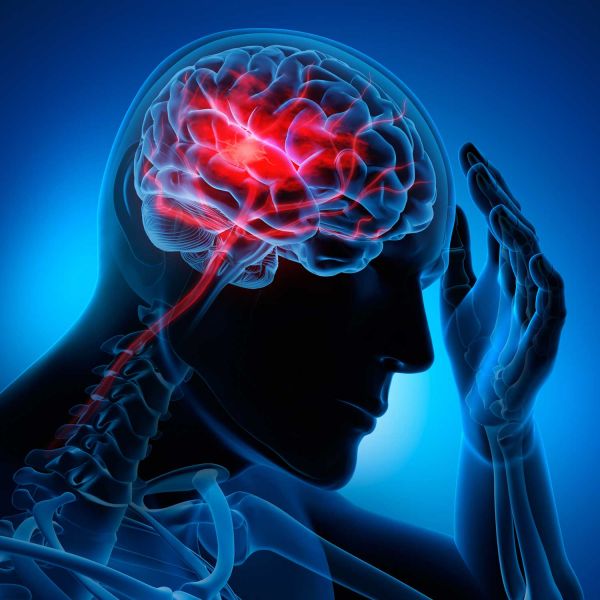Recognizing the Signs of Stroke: BE FAST
Every year, millions of people worldwide experience strokes, making it one of the leading causes of disability and death. A stroke occurs when the blood supply to the brain is interrupted or reduced, depriving brain tissue of oxygen and nutrients. This sudden disruption can have devastating consequences, impacting a person’s ability to move, speak, and even think. Consequently, stroke is rightly regarded as a medical emergency that demands swift and decisive action.
The urgency in addressing stroke lies in its potential to cause irreversible damage to the brain. Brain cells begin to die within minutes of a stroke, underscoring the critical need for timely intervention. Recognizing the signs and symptoms of stroke can be the difference between life and death, between independence and disability. Therefore, increasing awareness about stroke and understanding its warning signs is paramount in our collective efforts to combat this debilitating condition.
As we delve deeper into the intricacies of stroke, exploring its causes, treatment options, and preventive measures, it becomes apparent that knowledge truly is power. By arming ourselves with information about stroke, we empower individuals, families, and communities to take proactive steps towards stroke prevention and to respond effectively in the event of an emergency. In the following sections, we will unravel the complexities of stroke, shedding light on its multifaceted nature and equipping readers with the tools they need to navigate this challenging terrain.
Causes of Stroke
Stroke is a complex medical condition that arises from the interruption or reduction of blood flow to the brain, leading to the impairment or death of brain cells. This interruption can occur for various reasons, resulting in two main types of stroke: ischemic stroke and hemorrhagic stroke.
Ischemic Stroke: This type of stroke occurs when a blood vessel supplying the brain becomes blocked or narrowed, restricting blood flow to a specific part of the brain. The blockage is typically caused by a blood clot or plaque buildup in the blood vessels, a condition known as atherosclerosis. Without adequate blood supply, brain cells begin to suffer from oxygen and nutrient deprivation, leading to tissue damage or death.
Hemorrhagic Stroke: Unlike ischemic stroke, hemorrhagic stroke occurs when a blood vessel in the brain ruptures or leaks, causing bleeding into the surrounding tissue. This bleeding can result from various factors, including high blood pressure, aneurysms (weakness in blood vessel walls), arteriovenous malformations (abnormal connections between arteries and veins), or head trauma. The presence of blood in the brain can exert pressure on surrounding tissue, leading to further damage and neurological deficits.
BE FAST:
BE FAST serves as a mnemonic device to aid in the recognition of stroke symptoms and prompt action. By remembering this acronym, individuals can quickly assess whether someone may be experiencing a stroke and seek timely medical attention:
–B: Balance: Sudden loss of balance or coordination can indicate a stroke. Individuals may experience difficulty walking or maintaining their balance, often without any apparent cause.
-E: Eyes: Sudden trouble seeing in one or both eyes is another warning sign of stroke. This may manifest as blurred vision, double vision, or even complete vision loss in one eye.
-F: Face: Sudden weakness or drooping on one side of the face is a classic symptom of stroke. This facial droop may affect the mouth, causing a lopsided smile or difficulty in fully closing one eye.
-A: Arms: Sudden weakness or numbness in one arm, particularly on one side of the body, can indicate a stroke. Individuals may struggle to raise their arm or maintain a firm grip on objects.
-S: Speech: Sudden difficulty speaking or understanding speech is a common symptom of stroke. This may manifest as slurred speech, difficulty forming words, or trouble comprehending language.
-T: Time: Time is of the essence when it comes to stroke. If any of these symptoms are observed, it is crucial to call emergency services immediately and seek medical attention without delay. Rapid intervention can significantly improve outcomes and minimize long-term disability.

Treatment of Stroke
-Time Sensitivity: When it comes to stroke treatment, time is of paramount importance. The phrase “Time is brain” underscores the critical need for swift action. The longer blood flow is disrupted to the brain, the greater the risk of irreversible brain damage. Therefore, recognizing the signs of stroke and seeking immediate medical attention is crucial.
-Medications: The specific treatment approach for stroke depends on the type and severity of the stroke. In the case of ischemic stroke, where a blood clot blocks a blood vessel supplying the brain, medications such as tissue plasminogen activator (tPA) or thrombolytics may be administered to dissolve the clot and restore blood flow. These clot-busting drugs are most effective when given within a few hours of the onset of symptoms.
-Surgery: In some cases of hemorrhagic stroke, where bleeding occurs within the brain, surgical intervention may be necessary to repair the blood vessel and stop the bleeding. This may involve procedures such as aneurysm clipping, coiling, or arteriovenous malformation (AVM) removal, depending on the underlying cause of the bleeding.
-Rehabilitation: Stroke recovery does not end with acute medical intervention; it is a journey that often requires ongoing rehabilitation to regain lost function and maximize independence. Rehabilitation programs are tailored to the individual needs of stroke survivors and may include physical therapy, occupational therapy, and speech therapy. Physical therapy aims to improve mobility, strength, and coordination, helping individuals regain control over their movements and reduce the risk of falls. Occupational therapy focuses on relearning everyday tasks such as dressing, bathing, and cooking, adapting the environment to accommodate any physical limitations. Speech therapy addresses communication difficulties and swallowing problems that may arise as a result of stroke, helping individuals regain their ability to speak clearly and safely consume food and liquids.
Precautions and Prevention
– Healthy Lifestyle: Adopting a healthy lifestyle is essential for stroke prevention. This includes maintaining a balanced diet rich in fruits, vegetables, whole grains, and lean proteins while limiting saturated fats, cholesterol, and sodium. A healthy diet can help control weight, blood pressure, and cholesterol levels, reducing the risk of stroke.
– Regular Exercise: Regular physical activity is crucial for maintaining cardiovascular health and reducing the risk of stroke. Aim for at least 150 minutes of moderate-intensity aerobic exercise or 75 minutes of vigorous-intensity exercise each week, as recommended by health guidelines. Exercise can help lower blood pressure, improve circulation, and promote overall well-being.
– Smoking Cessation: Smoking is a significant risk factor for stroke, as it damages blood vessels and increases the likelihood of blood clots. Quitting smoking can dramatically reduce the risk of stroke and improve overall health. Support resources and smoking cessation programs are available to help individuals quit smoking and maintain a smoke-free lifestyle.
– Limit Alcohol Intake: Excessive alcohol consumption can contribute to high blood pressure, irregular heart rhythms, and other risk factors for stroke. Limiting alcohol intake to moderate levels—defined as up to one drink per day for women and up to two drinks per day for men—can help lower the risk of stroke and promote cardiovascular health.
– Manage Chronic Conditions: Conditions such as high blood pressure, diabetes, and high cholesterol significantly increase the risk of stroke. Managing these conditions through medication, lifestyle modifications, and regular monitoring can help control risk factors and prevent stroke.
– Regular Check-ups: Regular check-ups with a healthcare provider are essential for monitoring and managing risk factors for stroke. Routine screenings for blood pressure, cholesterol levels, and other cardiovascular risk factors can help identify issues early and take appropriate measures to prevent stroke.
In conclusion, staying informed about stroke and its warning signs is paramount for everyone’s well-being. By familiarizing ourselves with the BE FAST acronym and understanding the importance of swift action, we can play a proactive role in preventing strokes and mitigating their impact. Empowering ourselves and our communities with knowledge about stroke empowers us to recognize its signs promptly and seek timely medical attention, potentially saving lives and minimizing long-term disability.
Moreover, advocating for stroke awareness and prevention initiatives within our communities can have a profound impact on public health outcomes. By spreading awareness about the risk factors for stroke and promoting healthy lifestyle habits, we can collectively work towards a future free from the burden of stroke-related disabilities. Together, let us prioritize stroke prevention, empower individuals to take control of their health, and foster a supportive environment where everyone is equipped to recognize and respond to stroke effectively. Through concerted efforts and education, we can pave the way for a healthier, stroke-free future for generations to come.








0 comments on “Recognizing the Signs of Stroke: BE FAST”